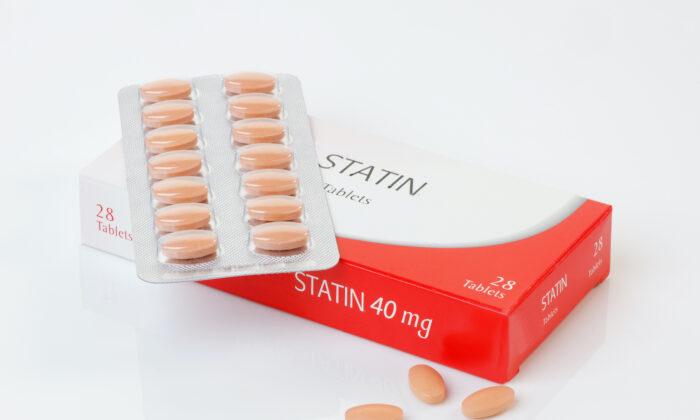In an Epoch Health podcast, our very own Dr. Ann Corson spoke with Dr. Stephanie Seneff on the cumulation of Dr. Seneff‘s research on the chemical glyphosate compiled in her book, “Toxic Legacy: How the Weedkiller Glyphosate Is Destroying Our Health and the Environment,” how she discovered it, how it damages many systems in our body and the environment, and what we can do against it.
Dr. Stephanie Seneff is a senior research scientist from the Massachusetts Institute of Technology. She spent over four decades working at the intersection of human biology and computers, and has published over 200 peer-reviewed scientific articles on a wide range of topics. In 2008, she began applying her expertise on statistical analysis and computational modeling in biology to investigate the impact of nutritional deficiencies and environmental toxicants on human health and has been researching and writing about glyphosate for nearly a decade. She holds four academic degrees from MIT and since 2011, has co-authored over 30 papers in various peer-reviewed medical and health journals on topics such as modern-day diseases and the impact of environmental toxins on human health.
Coming Across Glyphosate
Dr. Seneff didn’t expect to take a dive deep into the weed-killing agent glyphosate, used in the popular herbicide Roundup®, when researching autism. “My best friend had a son who developed autism. So I [became] aware of the problem. And I was watching the rates go up in the early 2000s, you know, [from] 2000 to 2008,” she said. After seeing the rates go up, she thought that it must have been something in the environment that caused it, so she began looking into it.“I happened to be at a conference where Professor Don Huber gave a two hour presentation on glyphosate. That was the first [time] that I really was aware of the word.” After hearing about everything glyphosate caused, Dr. Seneff was “on the edge of [her] seat.”
“Glyphosate is disrupting those microbes [because] glyphosate is chelating [essential] minerals, making them unavailable, actually making them simultaneously toxic and deficient [in our bodies]. And then [glyphosate is] also disrupting liver enzymes that are critical for detoxifying other toxic chemicals,” she says. “And I knew that the autistic kids, many of them have … issues, food sensitivities, bloating, constipation, all these problems, diarrhea, I knew there was something going on in the gut, I really was thinking it’s something they’re eating.”
Dr. Seneff later found through research that the rise of autism, when plotted on a curve, coincides perfectly with the glyphosate usage over time. “It’s a perfect match.”
What Exactly Is Glyphosate and What Does it Do to Our Bodies?
Glyphosate is a simple molecule. “It’s basically a glycine,” one of the 20 fundamental amino acids that make up all proteins in our body, but with a twist, Seneff explained. There is an extra thing stuck to the glycine molecule, something called a methyl-phosphonyl group which makes its behavior radically different from the normal glycine we need. The methyl-phosphonyl group makes glyphosate different from glycine in terms of its biophysical and biochemical behavior, yet still, according to Dr. Seneff, is most substituted for the regular glycine amino acid by the body’s protein-building machinery.“Glyphosate has that glycine piece that matches the code for glycine in the assembly of the proteins. That’s what’s so critical. It’s a unique mechanism of toxicity that … I believe [glyphosate is] getting into the proteins by mistake in place of glycine, and … certain proteins are getting messed up critically by glyphosate,” Dr. Seneff says.
She tells us that the reason glyphosate is widely used as a weed killer is because “Monsanto claims EPSP synthase, which is … an enzyme in this critical [plant] pathway, the shikimate pathway … exists [only] in plants, but not in humans … [they claim glyphosate is] safe, because we don’t even have that enzyme. But the problem is … many of our gut microbes have that enzyme and use that enzyme in the shikimate pathway to produce the aromatic amino acids [that are essential to us].” Enzymes are catalysts in our body, which speed up metabolism and other internal processes.
Gut microbes are very important, Dr. Seneff highlights. She says that most diseases, like rheumatoid arthritis, Alzheimer’s, Parkinson’s, and autism are all connected to gut issues.
Glyphosate was actually unintentionally discovered as a herbicide. It was initially used as an industrial pipe cleaning chelator and the workers found that the plants all around the efflux of the pipes were dying off, which is how it was repurposed as a weedkiller.
One particular ramification of glyphosate is that it begins to inhibit nutrient processing in infants. “Lactobacillus is a critical microbe in the gut. And when you’re born, that’s the … microbe that’s going to help you digest milk,” Dr. Seneff says. “[Lactobacillus] really depends on manganese … to be healthy, and the glyphosate is chelating the manganese making it unavailable to the [lactobacillus] and that’s part of what’s making [infants] sick. [All this is] on top of, of course, disrupting that enzyme [EPSP synthase].”
Glyphosate, Dr. Seneff tells us, basically kills important bacteria in our own gut microbiome that are essential for producing proteins, neurotransmitters, and many other essential things. Once this happens, it allows for the overgrowth of pathogenic bacteria that make us sick.
The Mechanism Behind the Disruption
“It gets into those enzymes by mistake in place [of] the coding amino acid glycine,” Dr. Seneff explains. Each protein is made of a chain of amino acids, and a change in one amino acid can radically change the structure of the entire protein. One example of this is sickle cell disease, where a defective hemoglobin protein substructure in the sickle cell changes it fundamentally. Glyphosate has the ability to do something similar with other vital proteins in the human body.Taking the enzyme EPSP synthase as an example, Dr. Seneff explained that it displays, at its substrate binding site, a motif containing glycine that is susceptible to damage by glyphosate. This means a short chain of building blocks in the EPSP enzyme that has the vital function of binding to its substrate is rendered useless if glyphosate is substituted for glycine in that spot. “[Glyphosate is] substituting for glycine during protein synthesis, it’s getting into the enzyme itself, where glycine should go,” Dr. Seneff claims. This ruins the whole ‘docking station’ structure enzymes are meant to have at their substrate binding sites.
As glyphosate, as a herbicide, kills plants, GMO plants have their own way of surviving its application. “The GMO crops … [are] engineered to resist glyphosate, they’re given a version of that enzyme, the EPSP synthase, it’s produced by a particular microbe. And that microbe does not have glycine at that spot, it has alanine, so they give them that [other] … version of the protein, which is able to work fine. That’s how they protect [themselves] from glyphosate.”
EPSP is not the only enzyme glyphosate is disrupting. It has incredible ramifications for the entire metabolism of the body. Dr. Seneff says that “[studies on] the mitochondria … have shown that glyphosate disrupts the mitochondria [and] causes mitochondrial stress, specifically inhibiting succinate dehydrogenase, which is an absolutely crucial enzyme.” Mitochondria are known as the powerhouses of the cell, responsible for producing the necessary energy most organisms use. A disruption in the enzyme likely leads to less units of energy produced.
Dr. Seneff explained that another way glyphosate disrupts our body is by disabling enzymes that attach sulfates to other molecules in the bloodstream. Adding sulfate molecules to others will make them water soluble and easy to transport around in the bloodstream. This is vital for many internal systems, prevents blood clotting, and keeps the sulfur levels in the bloodstream in check.
Glyphosate has also shown disturbing effects on offspring. Dr. Seneff talked about an experiment where pregnant mother rats were given a low dose of glyphosate during their pregnancy, “and then the mouse was fine. The offspring were fine too. But then when they went to the next generation, and especially to the third generation, you started to see all kinds of problems and kidney problems and reproductive issues and … inflammatory problems.”
How to Avoid Glyphosate
Dr. Seneff tells us that “the most critical thing … is to eat a certified organic whole foods diet, I think get rid of the processed foods because even without the glyphosate, they’re not healthy … it’s really just pure calories.”“Eating whole foods, and buying a certified organic label or having [a] personal relationship with a farmer where you know that they don’t use chemicals.” Dr. Seneff advises that you should move away from a place where they use glyphosate in their crops, because “when the wind is blowing your way and they’re spraying the glyphosate on the crop, you are in trouble.”
“I encourage people to eat fermented foods, sauerkraut, apple cider vinegar, it’s possible that the microbes … [in fermented foods are] able to metabolize glyphosate,” Dr. Seneff says. She also remarks that chlorine to disinfect water is great because “chlorine can also break down glyphosate.” If your local county doesn’t use chlorine to disinfect water, Dr. Seneff recommends that you install a reverse osmosis filter to remove it. It needs to be reverse osmosis as other filters don’t remove the glyphosate.
Dr. Seneff also says, “Glycine is a supplement [sometimes prescribed to patients] … you can see that if you have more glycine, it’s less likely for glyphosate to substitute if there’s plenty of glycine. But you’ve got to make sure that that’s organic … because if it’s not, it’s probably got glyphosate in it.”
She also advises people to talk with the local school districts, golf clubs, city parks, and other areas that have greenery so that they stop using Roundup® in these areas. Becoming active and voicing concerns is vital in raising more awareness of this issue and for action to be taken on a local, city, and state level to reduce the effects of these toxic products on soil, animal, and human health.







